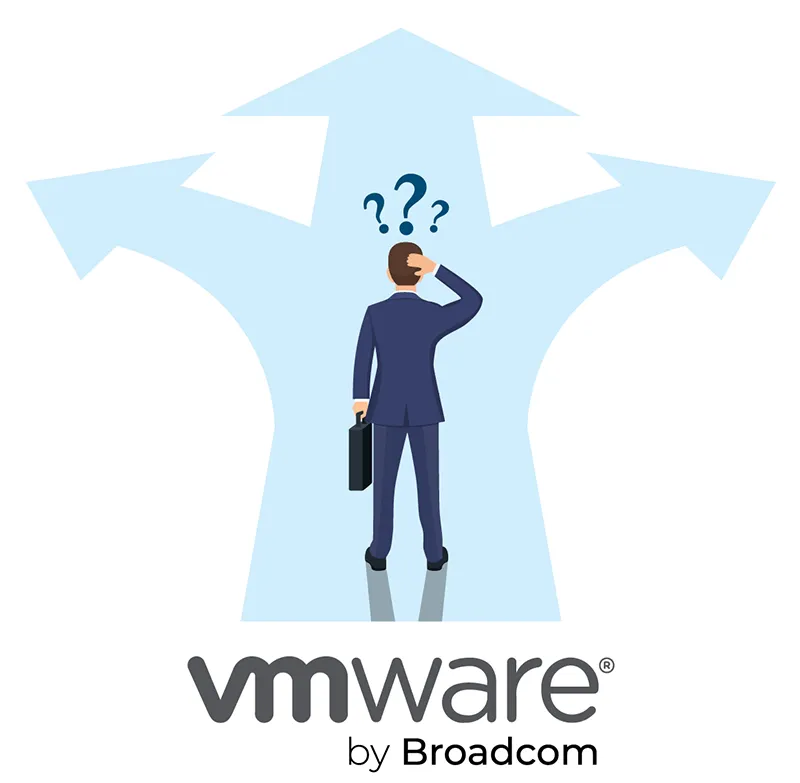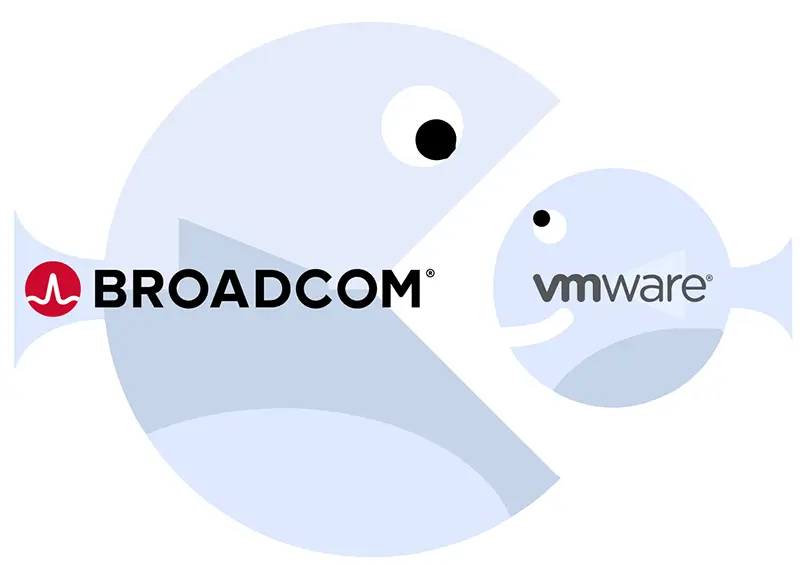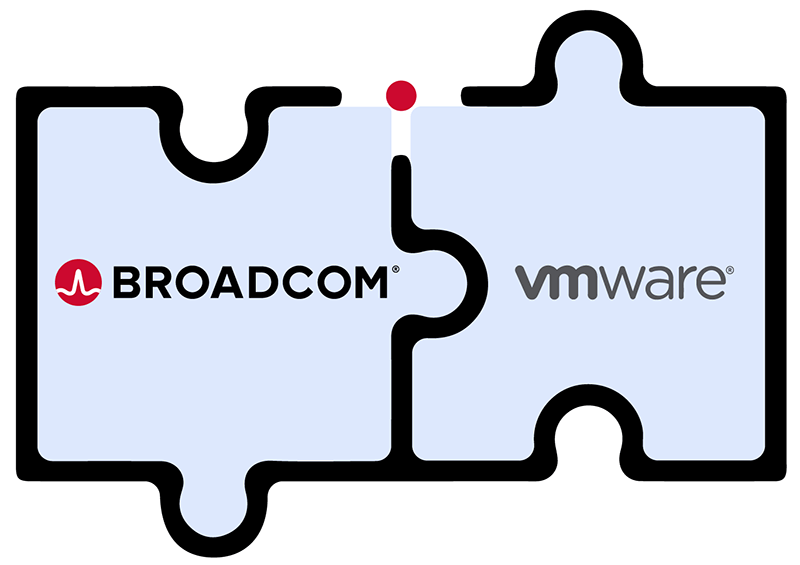
Introduction: A shift that shook the industry
When Broadcom finalized its $69 billion acquisition of VMware in late 2023, the cloud and virtualization world held its breath. Broadcom’s history with acquired software companies—Symantec, CA Technologies—hinted at aggressive monetization strategies, and VMware customers braced for impact. Now, over six months into the new regime, it’s clear: life for VMware users has changed dramatically—and not everyone is thrilled.
This article provides a comprehensive examination of what’s happening after the acquisition. Are companies finding life better, more expensive, or operationally harder? What do real-world examples reveal? And most importantly, what should current VMware users consider as they plan their next IT moves?

What changed after the Broadcom acquisition?
Broadcom wasted no time in making significant structural changes to VMware’s business model:
- License model overhaul: The traditional perpetual licenses and support renewals were phased out and replaced by subscription-only models. This change hit long-time users hard, especially in price-sensitive markets.
- Product streamlining: Broadcom focused on the most profitable VMware products, significantly reducing investment and support in smaller offerings.
- Partner ecosystem shake-up: Many long-term VMware partners found themselves out of the loop. Broadcom reduced the number of active resellers and service providers, often leaving customers scrambling for alternative support.
According to feedback from various IT forums and media outlets, including The Register and CRN, many customers have reported sudden contract renegotiations, aggressive pricing models, and even disruptions to product access.
Start your VMware exit strategy today — Talk to our migration experts
Whether you’re planning an OpenStack migration or exploring multi-cloud recovery, our team will show you how Hystax Acura can make this seamless transition efficiently.
Thank you for your request!
We will be in touch soon.
We respect your privacy. See our Privacy Policy. You can unsubscribe at any time.

The Impact on Businesses: Is Life Easier?
Short answer: not for most
While enterprise customers spending millions on VMware annually may have secured favorable conditions through direct negotiations, mid-sized businesses and regional providers faced:
- Drastically higher costs
- Vendor lock-in pressure due to reduced flexibility
- Longer support wait times and less personalized engagement
- Forced product transitions for legacy workloads
This situation has prompted many companies to reevaluate their virtualization strategies and cloud migration plans, including bold decisions to migrate from VMware to OpenStack, Nutanix, or public clouds.
Real-world examples: Stories from the frontlines
Let’s examine how specific organizations are responding:
CloudLinux
CloudLinux, known for its secure OS platforms and kernel-level customization, has publicly stated that it is accelerating the testing of KVM- and OpenStack-based platforms for internal and partner workloads. Their CEO expressed concern about “closed roadmaps” at Broadcom and emphasized the need for long-term transparency and control, both of which are compromised in the current VMware trajectory. The company is actively exploring VMware migration to OpenStack to gain flexibility.
OVHcloud
European cloud giant OVHcloud began offering expanded OpenStack-based IaaS solutions as an alternative to VMware for private cloud customers. Their documentation now actively guides clients on how to migrate VMs from VMware to OpenStack and optimize cost. Their open-cloud-first approach directly appeals to businesses impacted by Broadcom’s new pricing model.
A financial services mid-market company
One mid-sized European firm, under NDA with Broadcom, reportedly faced a threefold increase in licensing costs. Unable to justify the spend, they initiated a VMware migration to AWS, running performance-critical workloads in the cloud and retiring legacy VMware hosts. The move helped them cut infrastructure costs by nearly 40%.
A cloud opportunity in disguise?
While the Broadcom acquisition disrupted the status quo, it has become a catalyst for change. CTOs and infrastructure leaders are now:
- Re-evaluating virtualization dependencies
- Testing platforms that allow VMware to Azure migration or migrate VMware to GCP
- Building hybrid environments that leverage open-source tools like OpenStack
- Seeking partners who offer seamless VMware cloud migration or VMware to AWS migration options
For many, the choice now includes platforms that were previously “too complex” but today are supported by robust tooling and reliable migration services.

Is there any good news for VMware users?
Yes, but primarily for very large enterprises.
Broadcom has hinted at improved feature integration and enhanced security, particularly for vSphere and NSX users. Their plan to “focus deeply on innovation for top-tier customers” could yield improved AI-powered performance analytics, security integration, and faster patch cycles.
For businesses willing to pay, white-glove support and streamlined licensing may offer operational simplicity, if cost is no object.
What should IT leaders do now?
If your organization is still running VMware post-acquisition, here’s what to consider:
- Conduct a TCO analysis under new subscription terms
- Start pilot programs to migrate VMware to Google Cloud or OpenStack
- Evaluate tools for VMware to AWS migration and hybrid DR strategies
- Engage FinOps to control rising infrastructure spend
- Plan a long-term exit strategy that includes VMware to OpenStack migration or OpenStack-native recovery options
Organizations are increasingly choosing to migrate from VMware to OpenStack to reduce licensing burdens and gain greater architectural control. In parallel, many begin testing their backup and DR pipelines to ensure they work independently of any one vendor.
How Hystax can help
- Flexible options to migrate VMware to GCP, Google Cloud, or Azure
- Disaster recovery and synthetic backup strategies that work across VMware, AWS, OpenStack, and others
- Cloud-native replication and VMware cloud migration tooling
With Hystax Acura, your IT team can execute complex transitions—like from VMware to OpenStack or VMware to AWS migration—with full support and transparent cost planning. This action enables you to de-risk your infrastructure strategy and maintain control over it.
Request a free personalized demo of Hystax Acura — a solution designed for seamless, automated disaster recovery and backup for public clouds.
Thank you for your request!
We will be in touch soon.
We respect your privacy. See our Privacy Policy. You can unsubscribe at any time.
Conclusion: The era of choice has returned
Broadcom’s acquisition of VMware has brought disruption—but also opportunity. For many, it’s a sign to evolve beyond legacy licensing and begin exploring modern, cloud-friendly, and open virtualization ecosystems.
Whether you’re planning to migrate VMware to Google Cloud, switch to open infrastructure, or just diversify your DR strategy, now is the time to act—before costs rise further and flexibility disappears.
And with platforms like Hystax Acura, your migration from VMware to OpenStack or to any major cloud becomes faster, safer, and future-ready.

